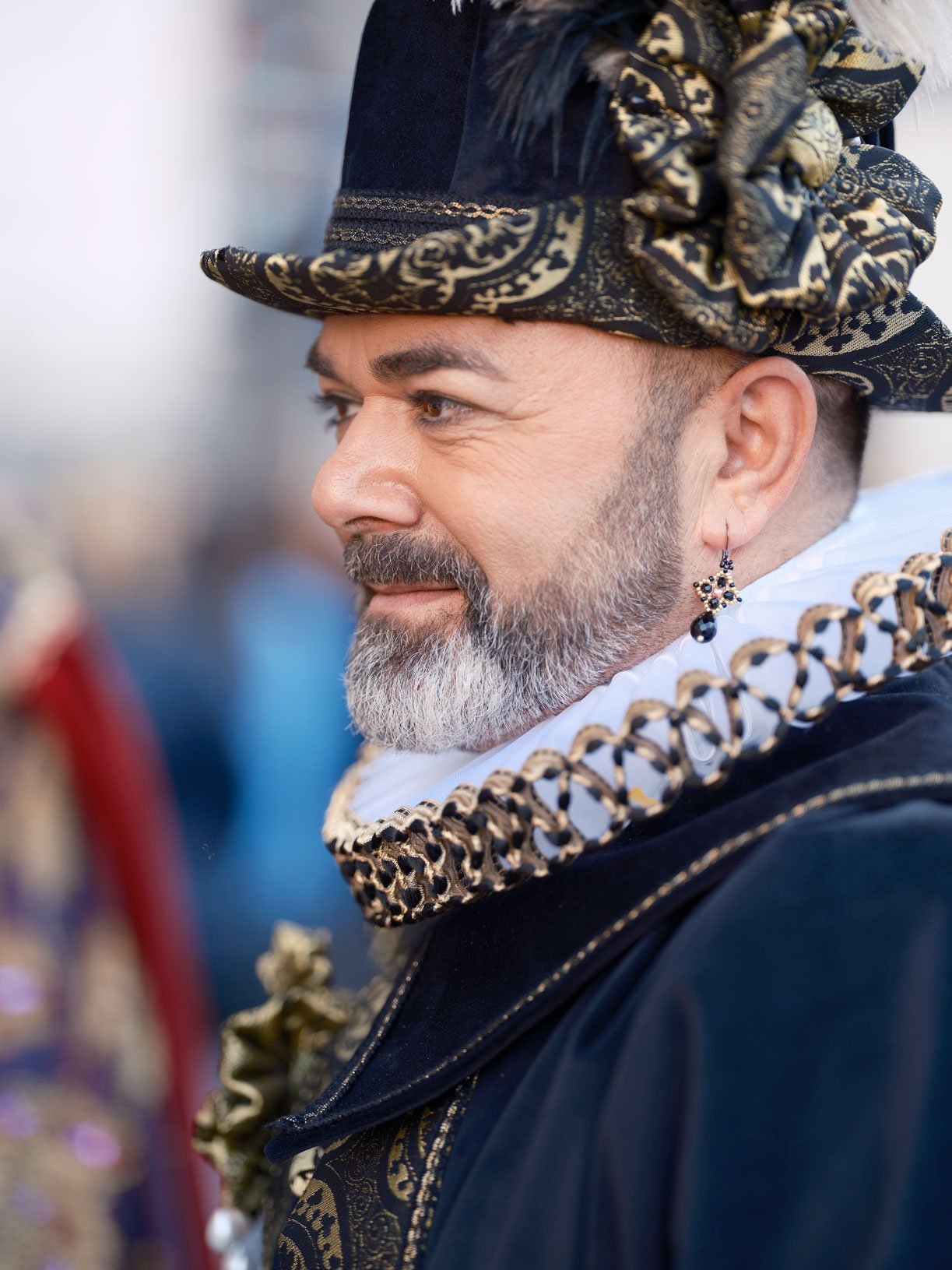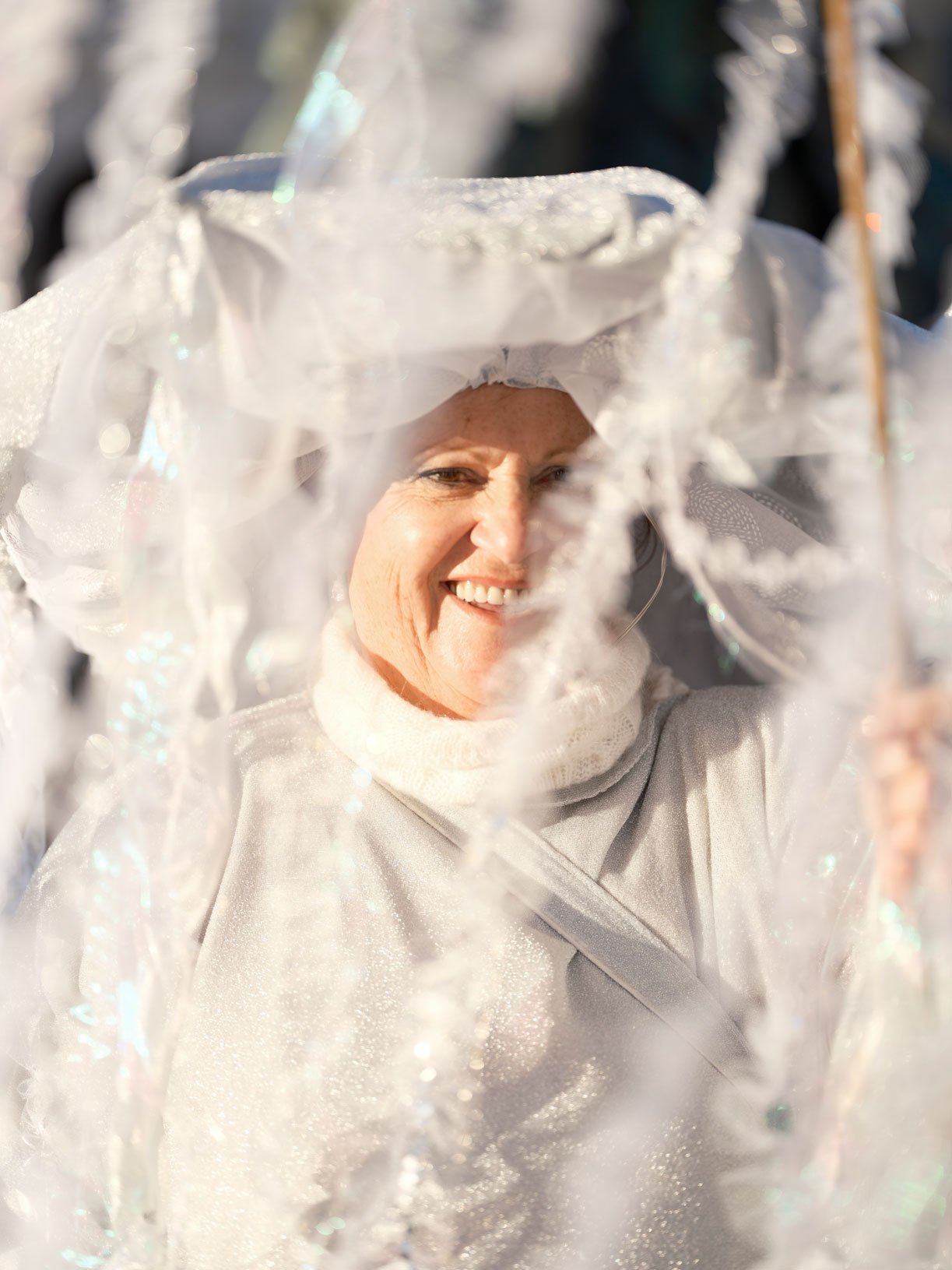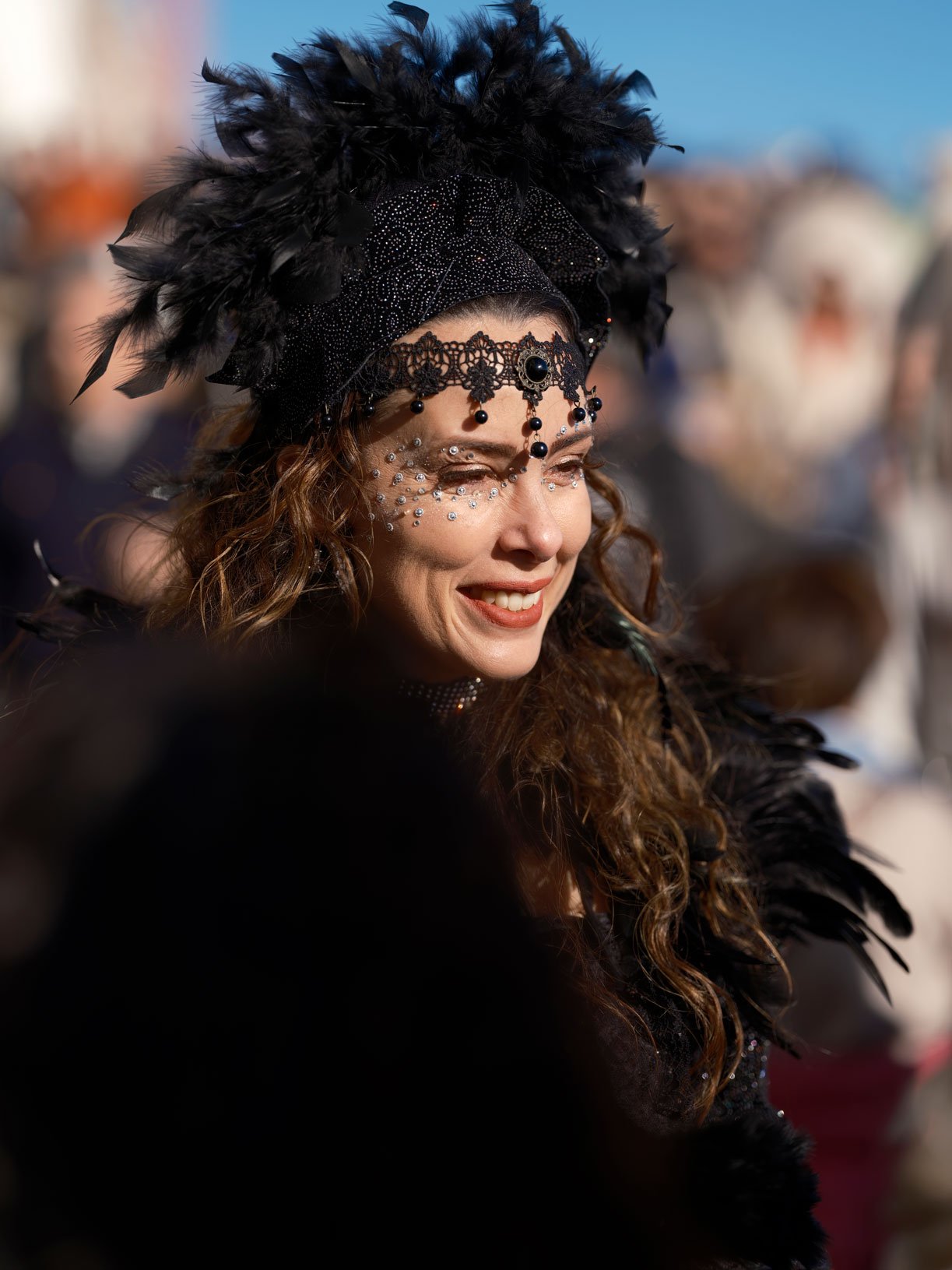Hasselblad Face Detection? Absolutely not. Fujifilm Eye Detection? Absolutely yes, thank you. But before discussing the topic in detail, let me take a few seconds to talk about the context in which I put the Fujifilm GFX 100ii to the test.
The Carnival of Venice is one of the most famous and ancient carnivals in the world (though not as ancient as the rite dedicated to Osiris in ancient Egypt), with a history dating back hundreds of years, rooted in the medieval period, with the first documented traces dating back to 1097. The peak of the Carnival occurred during the period of the Republic of Venice, between 1268 and 1797. During this time, the city was one of the most powerful and wealthy in Europe, and the Carnival was an occasion for Venetian nobility to flaunt their wealth and social status through extravagant costumes and elaborate masks.
Fujifilm GFX 100ii with 110mm lens
Originally, the masks served to allow the nobles to mingle freely with common people without revealing their identities. This allowed them to participate in parties, dances, and other events without worrying about social consequences. Masks thus became a fundamental element of the Carnival, and even today, they are an iconic part of the celebration. During the Carnival, the streets of Venice fill with colors, music, and fun. The city becomes a living stage, with concerts, theatrical performances, masked balls, and parades taking place in every corner. Main squares like Piazza San Marco become the center of action, with thousands of people gathering to celebrate.
Fujifilm GFX 100ii with 110mm lens
As you can imagine, during this festival, the streets of Venice, already normally crowded with tourists, become almost unbereable. A photographer who wishes to go to Venice to photograph the masks should opt for the last weekend of the festivities, usually the days with the highest attendance. They should book a room in a hotel or in a bed and breakfast, wake up at 5 in the morning, and go to Piazza San Marco to be among the first to photograph the masks which will be already posing there. This is because, in the early hours of the morning, tourists have not yet invaded the streets, and the masks can pose for photographers relatively calmly. I say "relatively" because there are some photographers who are more stubborn than a dog with a bone, and sometimes you risk a quarrel. But let's forget about that, that's another story.
However, I went on Shrove Tuesday, the last day of the festivities. Not only that, I arrived by train around one in the afternoon, so I definitely missed the only chance to photograph calmly and without the crowd around.
Why am I telling you all this and why is it important? Because there is a big difference between photographing still, posed masks, and doing so while they continue to move, surrounded by people who at times trample each other for a photo or to take a selfie with them.
In such a context, it becomes entirely street photography, with the complication of having to find a gap to physically be able not only to photograph the mask but to do so while not having twenty people in front of you.
Sometimes you think you've succeeded. That it's your moment. You're just 50 centimeters from the mask, about to take a photo, and BOOOM, three people manage to squeeze into those 50 centimeters between you and the mask, oblivious to your presence.
You will understand that three factors become fundamental;
1 Observing the scene and trying to predict the movements of the mask and the crowd.
2 Being fast with the camera.
3 Being able to rely on a solid, efficient, fast, and reliable autofocus system.
I found all this in the autofocus system, with eye detection, putting my Fujifilm GFX 100ii to the test during the Carnival of Venice.
Not only was the autofocus system so efficient at nailing the eyes of the model, despite them being constantly moving and with their face behind a mask. But it was also able to not be distracted or obstructed by the confetti and hanging fabrics in front of the faces of the masked people, and this is something I found truly astounding.
I didn't expect an auto eye detection system to be so precise and fast. Of course, it's not comparable to the autofocus system of a flagship full-frame mirrorless camera from Sony, which has to deal with a lower data flow. Here we are talking about a medium format, with 100 million pixels, so a significantly more demanding data flow.
I remember a couple of years ago, I went to Venice with my Hasselblad X1D. I couldn't keep up with the situations that presented themselves to me, and the camera wasn't stabilized. As a result, I put the camera back in my bag and continued to shoot with a smaller full-frame camera.
Same problem with the X2D the following year. Definitely a better camera, stabilized, but not really designed for street photography. You can't spend time trying to focus on the eye of a mask while it moves, and then recompose the image. In the meantime, while you try to do just one of these operations, the scene in front of your eyes has already changed three times.
The Fuji GFX doesn't have the size of a street camera, doesn't have the weight of a street camera, but it has all the functions necessary to allow you to take the photos you want, despite adverse conditions. So I managed, in just 4 hours of light, to bring home a lot of photos, some of which I really like, others I took as tests to stress the autofocus system.
Fujifilm GFX 100ii with a 100mm lens.
All the photos I've included in this video are not post-processed. They are the JPGs as they were taken by the camera. Perhaps later I will make a video about the Fuji Film Simulation science, about the huge community that creates fantastic things every day, and the advantages of a photographic workflow exempt, or almost exempt, from post-production.
And here we are at the end, that's all for today. Soon, I will be heading to Liguria to take photos of landscapes and abandoned villages with a dear friend for a few days, so I won't fail to prepare and enrich the site with new photos.
Good light to everyone, and remember, in a world that moves too fast, taking the time to observe becomes an act of rebellion.
Goodbye!























































